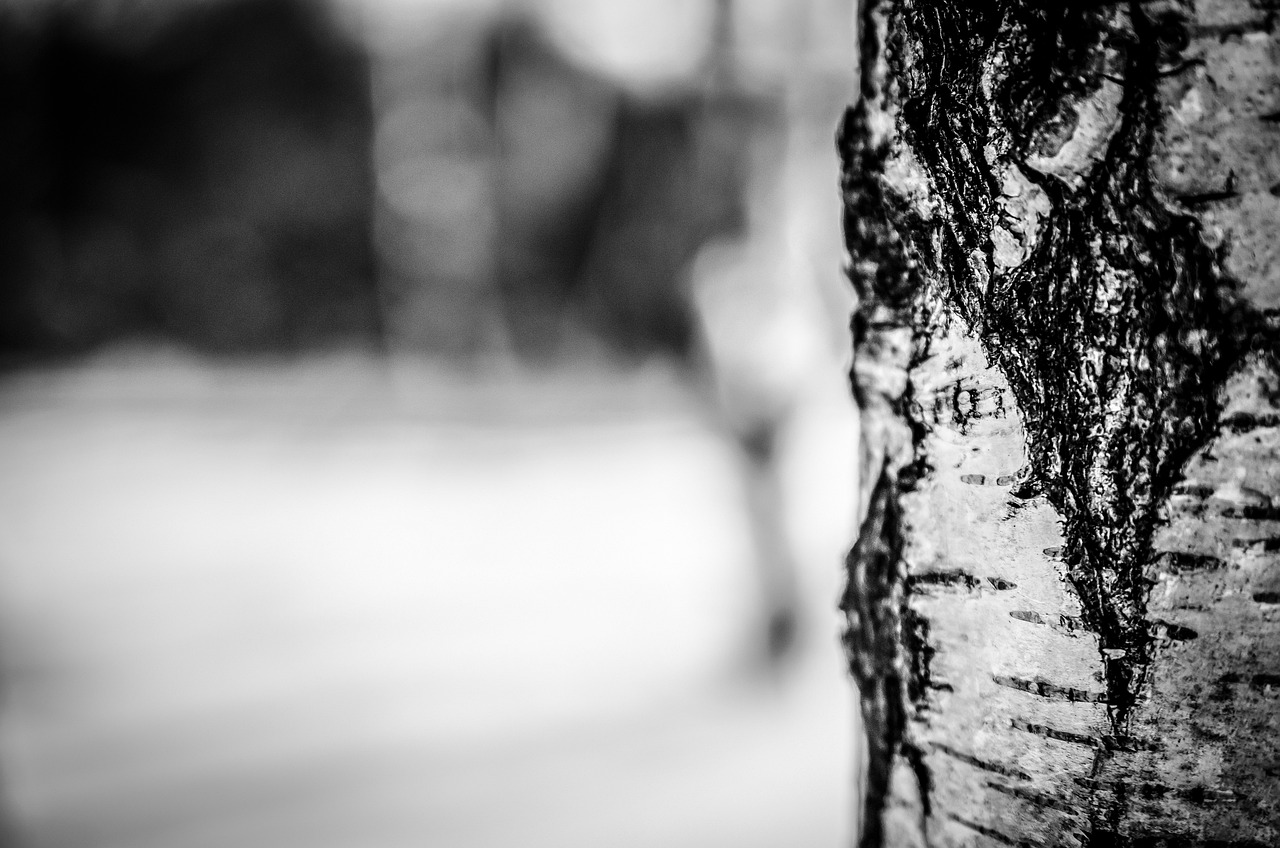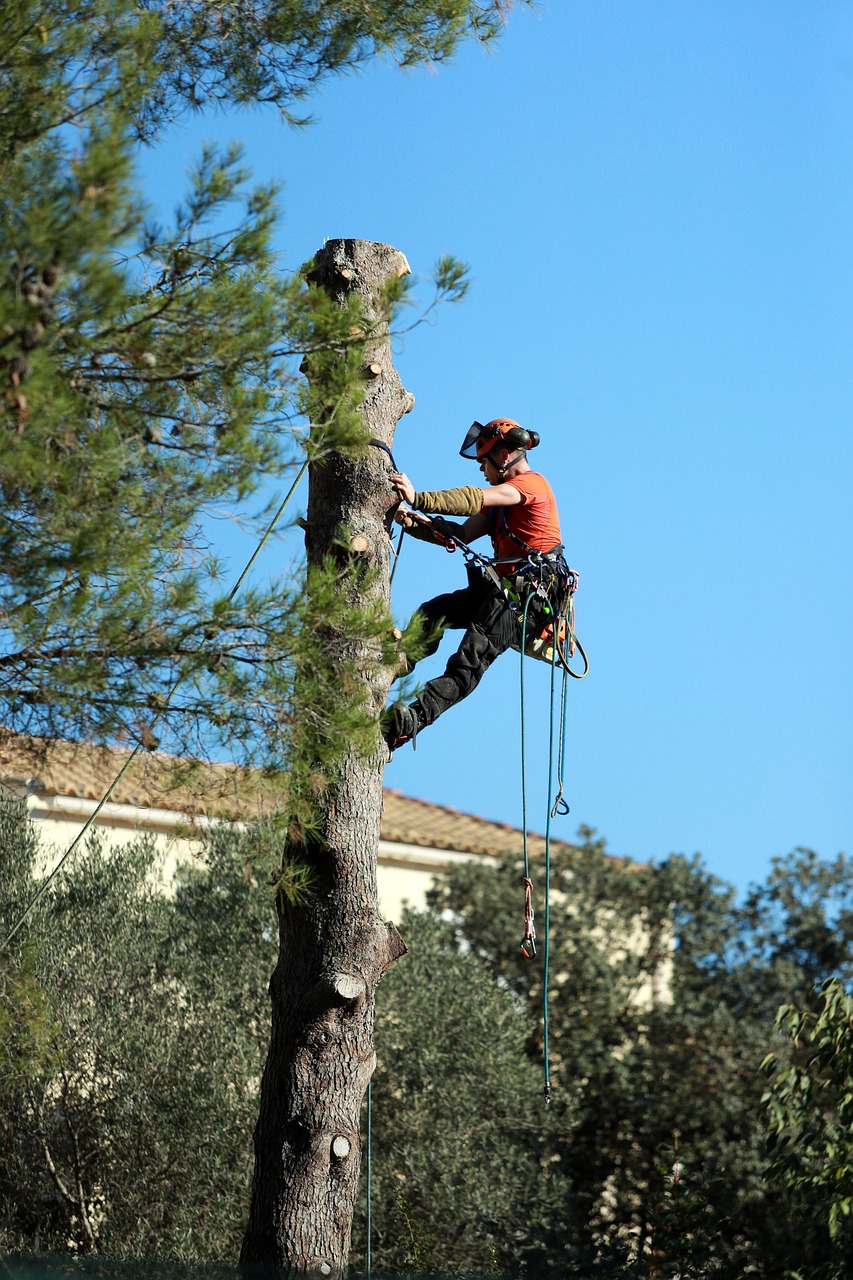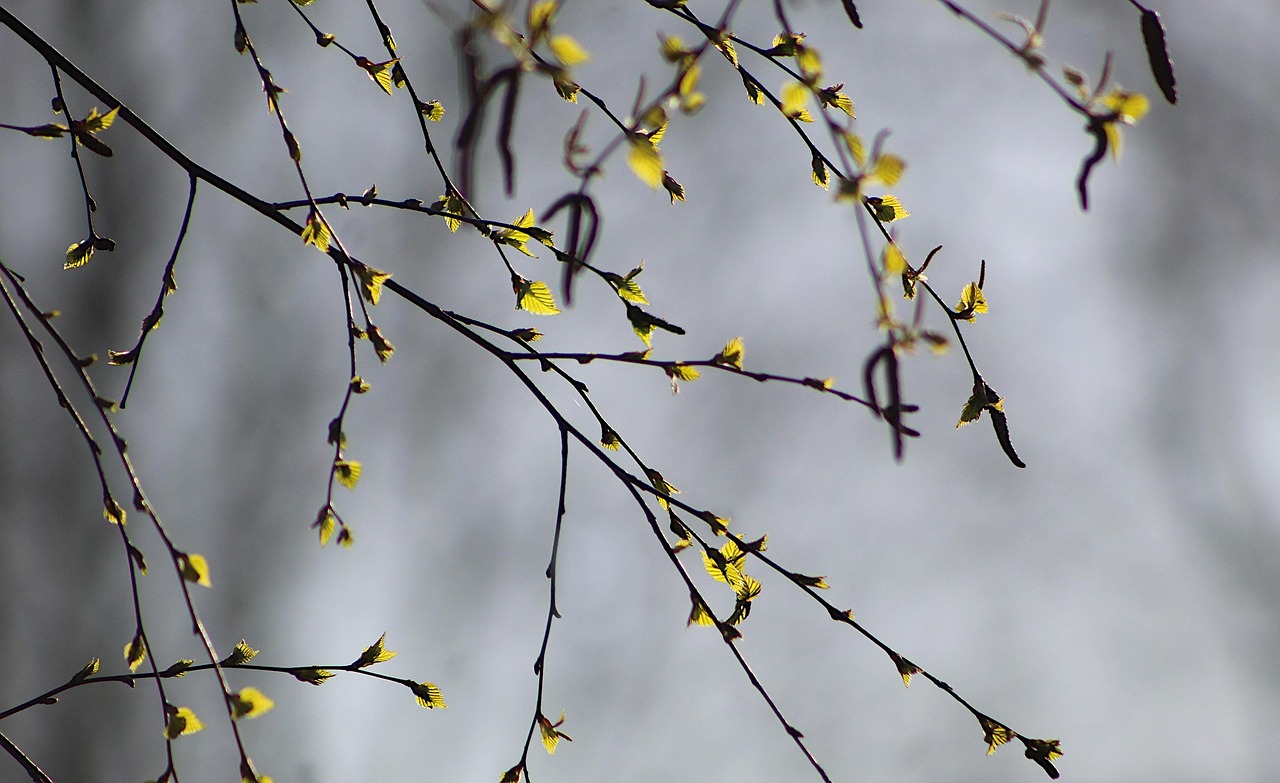To maintain the shape and health of a birch tree, trimming should be done during the late winter or early spring. Focus on removing dead, damaged, or crossing branches. This helps improve airflow and light penetration, promoting better growth and reducing the risk of disease.
Understanding Birch Trees

Birch trees are known for their striking white bark and graceful appearance. They are popular choices for landscaping due to their aesthetic appeal and ability to thrive in various soil types. However, like all trees, birches require proper care to ensure they remain healthy and maintain their beautiful shape over the years.
Trimming is an essential part of birch tree maintenance. It not only enhances their visual appeal but also contributes to their overall health. Proper trimming encourages new growth and helps prevent diseases that can arise from overcrowded branches. Understanding the best practices for trimming birch trees is crucial for any gardener or homeowner looking to keep their trees in optimal condition.
Why Trim Birch Trees?
Trimming birch trees serves several purposes:
- Health Improvement: Removing dead or diseased branches prevents the spread of infections.
- Shape Maintenance: Regular trimming helps maintain a balanced and aesthetically pleasing shape.
- Growth Promotion: Trimming encourages new growth by allowing more sunlight to reach the inner branches.
- Safety: Removing low-hanging branches can prevent accidents and property damage during storms.
When to Trim Birch Trees
The timing of trimming is critical for the health of birch trees. The best time to perform this task is during late winter or early spring, before the sap starts to flow. Trimming during this period minimizes stress on the tree and reduces the risk of sap loss, which is particularly significant for birches.
It is advisable to avoid trimming birches in late spring or summer. During these seasons, trees are actively growing, and trimming can lead to excessive sap loss and increased vulnerability to pests and diseases.
Tools Needed for Trimming
Having the right tools is essential for effective and safe trimming. Here are some recommended tools:
- Hand Pruners: Ideal for small branches up to ¾ inches in diameter.
- Loppers: Useful for cutting branches between ¾ inches and 1½ inches thick.
- Saws: A pruning saw is necessary for larger branches over 1½ inches in diameter.
- Safety Gear: Always wear gloves and safety goggles to protect yourself while working.
Best Practices for Trimming Birch Trees
When trimming birch trees, following best practices ensures that the tree remains healthy and grows effectively. Here are some key guidelines to consider:
- Assess the Tree: Before you start trimming, inspect the tree carefully. Look for dead, damaged, or diseased branches that need removal.
- Make Clean Cuts: Use sharp tools to make clean cuts. Jagged edges can leave the tree vulnerable to disease.
- Prune Responsibly: Avoid cutting more than 25% of the tree’s canopy in a single season. This helps prevent shock.
- Avoid Topping: Do not top your birch tree, as this can lead to health issues and an unattractive shape.
By understanding the significance of proper trimming techniques, homeowners can ensure that their birch trees remain healthy and vibrant for many years. The following sections will delve deeper into specific trimming techniques, common mistakes to avoid, and expert tips for achieving the best results.
Common Mistakes to Avoid When Trimming Birch Trees
While trimming birch trees can greatly enhance their health and appearance, there are several common mistakes that can lead to adverse effects. Being aware of these pitfalls can help ensure that your trimming efforts are beneficial rather than harmful.
- Ignoring the Tree’s Natural Shape: One common mistake is disregarding the natural growth pattern of the tree. Birch trees have a unique structure, and excessive or improper trimming can lead to an unnatural appearance.
- Pruning at the Wrong Time: Trimming during the wrong season can stress the tree. As mentioned earlier, late winter or early spring is ideal. Pruning in late summer or fall can expose the tree to diseases.
- Over-pruning: Cutting away too much foliage can shock the tree and hinder its ability to photosynthesize. Aim for a balanced approach, removing only what is necessary.
- Neglecting Tools Maintenance: Using dull or dirty tools can lead to ragged cuts, making the tree susceptible to infections. Always ensure your tools are sharp and clean before use.
- Failing to Clean Up: After trimming, it is essential to clean up fallen branches and debris. Leftover materials can harbor pests and diseases that may affect the tree’s health.
Specific Techniques for Trimming Birch Trees

Different techniques can be employed when trimming birch trees, depending on the desired outcome and the specific circumstances of each tree. Here are effective methods to consider:
Crown Thinning
Crown thinning involves selectively removing branches from the upper canopy of the tree. This technique increases light penetration and air circulation, which are vital for the overall health of the tree. Here’s how to perform crown thinning:
- Identify crowded branches that are crossing or rubbing against each other.
- Remove these branches back to their point of origin or to a lateral branch.
- Aim to remove about 15-20% of the crown to avoid shock.
Crown Raising
Crown raising raises the lower branches of the tree, providing clearance for pedestrians, vehicles, and other plants. This technique is particularly useful in urban settings. Follow these steps for effective crown raising:
- Assess which lower branches are obstructive.
- Trim these branches back to a lateral branch or remove them entirely if they are unhealthy or unsightly.
- Ensure that you maintain a balanced look as you remove lower branches.
Crown Reduction
Crown reduction involves reducing the overall size of the tree’s canopy while maintaining its natural shape. This technique is often used for trees that have outgrown their space. Here’s how to carry out crown reduction:
- Identify branches that extend beyond the desired shape and size.
- Cut back these branches to a lateral branch, ensuring that you do not leave stubs.
- Aim for a gradual reduction rather than a drastic cut to preserve the tree’s health.
Signs of a Healthy Birch Tree

After trimming, it is important to monitor your birch tree for signs of health. A healthy birch tree will exhibit several characteristics:
- Vibrant Foliage: Healthy leaves are typically bright green and free from discoloration or spots.
- Strong Growth: New growth should appear each season, indicating that the tree is thriving.
- Stable Structure: The tree should stand upright without leaning excessively or exhibiting signs of weakness in its branches.
- No Pests or Diseases: A healthy birch will not show signs of infestations like holes in leaves or visible pests.
By understanding these techniques and monitoring the health indicators of your birch trees, you will be better equipped to maintain their beauty and vitality throughout the years.
Dealing with Common Birch Tree Pests and Diseases
Even with proper trimming and care, birch trees can face challenges from various pests and diseases. These issues can compromise the health and beauty of your tree. It is essential to recognize these problems early and know how to address them effectively.
Common Pests Affecting Birch Trees
Several pests are known to affect birch trees. Understanding their signs and potential impact can help you take prompt action:
- Birch Borers: These pests tunnel into the bark, causing visible damage. Look for small holes in the bark and a general decline in tree vigor.
- Aphids: These small insects suck sap from the leaves, leading to curling and yellowing foliage. They can also excrete honeydew, which attracts ants and can lead to sooty mold.
- Leaf Beetles: These beetles feed on the leaves, creating holes and reducing leaf area. Heavy infestations can lead to defoliation.
Signs of Pest Infestation
Identifying a pest problem early is crucial. Here are some signs to watch for:
- Discolored Leaves: Yellowing or browning leaves can indicate stress caused by pests.
- Visible Insects: Regularly check the undersides of leaves and branches for pests.
- Wilting: Wilting leaves may suggest that pests are sucking sap, affecting the tree’s hydration.
- Sticky Residue: The presence of sticky substances on leaves or around the tree may indicate aphid infestations.
Diseases That Affect Birch Trees

Birch trees are also susceptible to various diseases that can impact their health. Recognizing these diseases early can help in managing them effectively.
Common Diseases
- Birch Leaf Miner: This disease is caused by a small insect that burrows into the leaves, creating brown blotches. Affected leaves may drop prematurely, weakening the tree.
- Powdery Mildew: A fungal disease that appears as a white powdery coating on leaves. It typically occurs in warm, dry conditions and can lead to leaf drop if not managed.
- Root Rot: Caused by various pathogens, root rot leads to yellowing leaves and overall decline. It often results from excessive moisture or poor drainage.
Identifying Disease Symptoms
Knowing the symptoms of disease can help you take action before significant damage occurs. Here are some common signs:
- Leaf Discoloration: Yellowing or browning leaves that fall prematurely may indicate disease.
- Mold or Fungal Growth: The appearance of mold or unusual growth on leaves or bark is a red flag for fungal infections.
- Stunted Growth: Trees that show reduced growth or vigor may be suffering from a disease affecting their roots or foliage.
Preventative Measures for Maintaining Birch Tree Health
Preventing pests and diseases is the best strategy for maintaining healthy birch trees. Implementing certain practices can help ensure your birch remains robust:
- Regular Inspections: Conduct routine checks of your birch tree for signs of pests or diseases. Early detection is key to effective management.
- Proper Watering: Ensure that the tree receives adequate water, especially during dry spells, but avoid overwatering to prevent root rot.
- Mulching: Applying mulch around the base of the tree helps retain moisture and suppress weeds, creating a healthier environment.
- Pest Control Measures: Use organic insecticides or natural predators to manage pest populations without harming beneficial insects.
By staying vigilant and implementing preventative measures, you can significantly reduce the risk of pests and diseases affecting your birch trees, ensuring they remain healthy and beautiful for years to come.
Additional Tips for Successful Birch Tree Trimming
In addition to the best practices and preventive measures outlined, there are further tips that can enhance your birch tree trimming experience. These tips can lead to better results and healthier trees.
Understanding Tree Growth Patterns
Each variety of birch tree has its unique growth pattern. Familiarizing yourself with the specific type of birch you have—whether it be River Birch, Paper Birch, or White Birch—can inform your trimming practices. For example, some birches naturally grow taller and may require different approaches to shaping compared to others.
Engaging Professionals
If you are unsure about the best practices for trimming your birch trees or if the trees are particularly large or complex, consider hiring a professional arborist. Experts can provide valuable insights and ensure that your trees are trimmed safely and effectively.
Post-Trimming Care
After trimming, it is essential to care for your birch tree properly. Here are some aftercare tips:
- Watering: Ensure that the tree receives sufficient water post-trimming. This helps reduce stress and promotes recovery.
- Fertilization: Applying a balanced fertilizer can support new growth, especially if the tree has been significantly pruned.
- Monitoring: Keep an eye on the tree for any signs of stress or disease following trimming, as this period can be crucial for recovery.
Final Thoughts
Birch trees are a wonderful addition to any landscape, offering beauty and shade. Proper trimming is essential for maintaining their health and appearance. By following the best practices outlined in this guide, you can ensure that your birch trees thrive throughout the seasons.
Remember the importance of timing your trims, using the right tools, and applying techniques that respect the natural growth of the tree. Regular inspections for pests and diseases will further bolster your efforts, allowing you to intervene early when necessary.
Maintaining birch trees is not just about aesthetics; it is also about fostering a healthy ecosystem in your garden. Well-cared-for trees contribute to better air quality, provide habitat for wildlife, and enhance the overall beauty of your outdoor space.
By implementing these practices and remaining engaged with the health of your birch trees, you can enjoy their beauty for many years to come. The journey of caring for these trees is rewarding, providing both satisfaction and a vibrant environment in which they can flourish.
